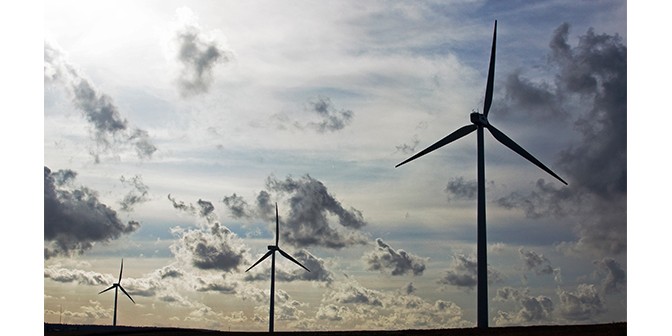Renewable Portfolio Standards (RPS) are the most powerful forces propelling renewable energy production in the US. These mandates have been approved by state legislators in 33 US States and the District of Columbia. They require a wide range of percentages of renewable energy to be produced by utilities in each state. There are currently no federal renewable energy mandates and it remains to be seen if there ever will be. This makes state RPS critical to renewable energy production.
The aforementioned states are leading the way with stricter and stricter mandates and more states are adopting mandates each year. The most aggressive state mandates are found in Vermont, California, and Hawaii. Vermont is requiring 75 percent renewable by 2032. California (the world’s seventh largest economy) is mandating utilities to be 50 percent renewable by 2030. Hawaii has a 70 percent mandate by 2040 and 100 percent by 2045. These three states are racing towards 100 percent renewable!
Oregon’s mandate for the state’s three largest utilities (Portland General Electric, PacifiCorp, and Eugene Water and Electric Board) is 20 percent renewable by 2020 and 25 percent by 2025. According to the Oregon Department of Energy, approved renewable energy sources are hydropower, wind, solar (both solar photovoltaic and solar thermal), wave, geothermal, biomass, and other qualified resources.
The good news is that Oregon has mandates and we are reaching them (slowly). The bad news is that Oregon is not a renewable energy leader, even though we have the resources to be one. I hunger for a stricter mandate because Oregon has the potential to be a national leader like Vermont, California and Hawaii.
Aside from Oregon’s significant hydro resource, which is largely already captured in areas where it has been approved, Oregon has abundant wind, solar, biomass, and geothermal resources. However, these resources are largely untapped. For example, wood from forest thinning is already being burned, but this biomass could potentially be burned to create electricity.
Why not get ahead of our current RPS and reduce our dependence on coal and natural gas now? According to their website, Pacific Power is 62.97 percent coal, 14.72 percent natural gas, 8.30 percent hydro, 3.61 percent wind, 1.10 percent biomass, .35 percent geothermal, and 9.40 percent other. Since Bend is powered by Pacific Power, we are way behind in clean energy production.
I propose a new Oregon RPS to put Oregon on the map as a renewable energy leader: 33 percent by 2020, and 50 percent by 2030. If California, the largest energy consumer in the U.S., can be 50 percent renewable by 2030, so can we! Increasing our RPS would benefit our state in several ways. Oregon would see a fantastic employment boom from direct and indirect jobs. Wind and solar energy construction employs workers of all skill levels, including truck drivers, engineers, installers, crane operators, etc.
We would also see improved air quality from the use of fewer fossil fuels. We can all do our part to support a stronger RPS in Oregon and across the US.
If you would like to see Oregon become a national leader in renewable energy, join me in picking up the phone and or emailing Representative Jessica Vega Pederson at 503-986-1447 (rep.jessicavegapederson@state.or.us) and let her know that you support a stronger RPS in Oregon. (Representative Jessica Vega Pederson is the chair of the house energy and environment committee that could draft a new bill to make the Oregon RPS stronger). With a quick call or email to the committee chair, you can help create more clean energy right here in Oregon!
John Copyak
Renewable Energy Real Estate Manager
john@cleanusapower.com
541-668-0423




